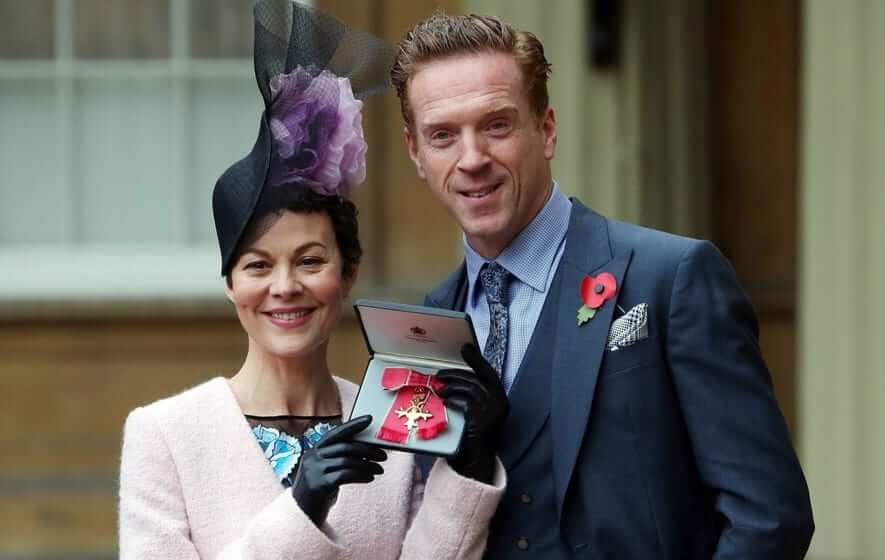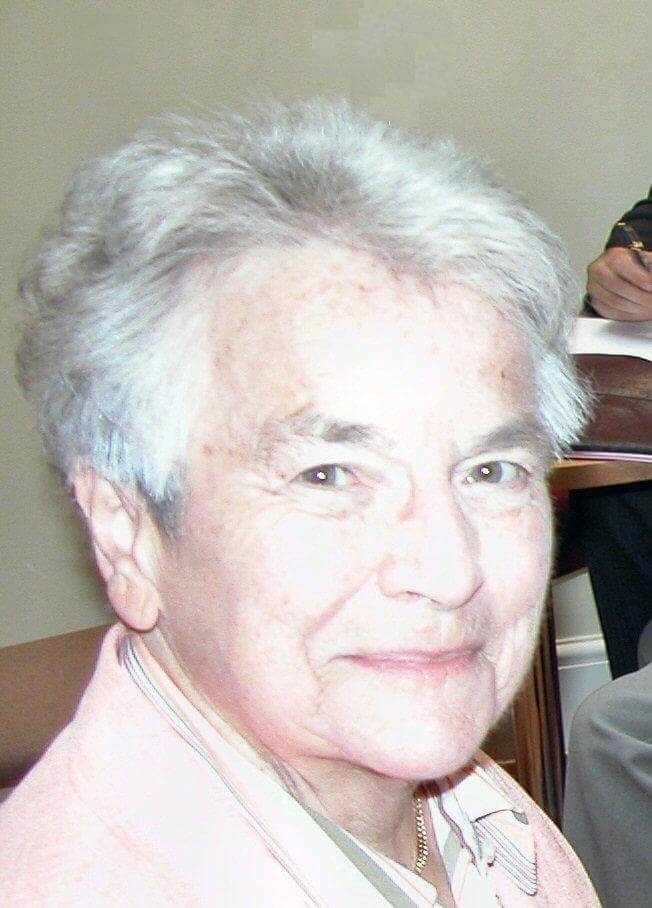Celebrating pioneering OQs on International Women’s Day
Friday 8 March 2019
Members of the Queenswoodian editorial committee have been investigating the pioneering work of some of Queenswood's most eminent alumnae.
Helen McCrory OBE (1980-86)
Actress, awarded an OBE for services to Drama
by Kat Demchak, Lower Sixth

Helen McCrory had an expat lifestyle during her childhood. She had the opportunity to live in Cameroon, Tanzania, France and Scandinavia. However, she settled in England when she arrived at Queenswood in 1980.
After leaving Q in 1986, McCrory spent a year in Italy, after which she returned to London, and she began to study acting at the Drama Centre in London. Today McCrory is considered one of Britain’s foremost actresses. She has won numerous prestigious awards for her performances as Elena in Uncle Vanya, Rosalind in As You Like It and many others. Although theatre is her first love, she has also appeared in numerous television and movie roles. She appeared in films such as Charlotte Gray, Enduring Love and Casanova amongst others. She is known for playing Narcissa Malfoy in the Harry Potter films. Recently, she has appeared in British crime drama Peaky Blinders where she plays Aunt Polly alongside Cillian Murphy.
In March 2006, Helen returned to Queenswood to open the Clarissa Farr Theatre (named after the then Principal, Clarissa Farr); the studio theatre was named in Helen’s honour. In 2014 she hosted a gala performance at the Barbican to celebrate the school’s 120th anniversary.
Helen is currently starring in the BBC drama MotherFatherSon opposite Richard Gere.
Marguerite Henrietta (1898-1903)
First woman editor of The Lancet
by Kaya Smith, Lower Sixth
Marguerite Henrietta started her education at Q in 1896 but, just before she was able to apply for university, she was moved to finishing school in France. On her return, she did not take the traditional route of finding a rich husband and living out her life as a housewife. To the utter dismay of her family, she became active in the militant suffragette movement that was extremely prominent at the time. Determined not to follow the traditional path set out for her she moved to South Africa in 1910. When there, she discovered her passion for medicine, which was first aroused after she studied logic, psychology and ethics at Queenswood. She passed the London Matric Exam in 1912 and returned to England in 1913 to enrol at the London School of Medicine for Women at the Royal Free Hospital. She was in the first group of women to be allowed to study at St Mary’s Hospital. After practising medicine for a few years Marguerite found she did not enjoy the uncertainty of it and found her way into medical journalism. By 1920 she was appointed as Assistant Editor at the Lancet.
Whilst there she investigated the shortage of candidates for nursing and became the honorary secretary of the Lancet Commission on Nursing. She was also appointed as a representative of the Ministry of Health to the General Nursing Council, where she continued to fight for better conditions for nurses. To add to the unbelievable achievements, she was later made Vice President of the Medical Women’s Federation and a council member of the London and Counties Medical Protection Society.
Diane Parry (1934-1938)
Influential campaigner for women’s ordination
by Kaya Smith, Lower Sixth
Diane was Head Girl at Q in 1938 and went on to study History at Lady Margaret Hall, Oxford. She was awarded a doctorate in philosophy in 1949 for her thesis. After her graduation, she worked for the Workers’ Educational Association.
After living abroad for many years she returned and took over the London University Diploma in Biblical and Religious studies. She was ordained as a deaconess in 1971 – this was before women could be ordained as priests. During her time as a member of the church, she played a leading role in the campaign that led the Church of England to accept women into the priesthood. From 1985 to 1988 she was Moderator of the Movement for the Ordination of Women. She famously said at the meeting of the Synod that the Church of England was ‘retaining the atmosphere of an exclusive men’s club on ladies’ night’. Women were allowed to be ordained in 1991. She also prepared a ‘History of women in the Church in the 20th century’.
Diane herself was unable to ever be ordained as a priest but played a pivotal role in allowing other women that privilege.
Dr Jean Horton (1934–1943)
Pioneering anaesthetist
by Laurel Lancaster, Lower Sixth

Our main Biology laboratory is named after Jean Horton, OQ. Jean Horton left Queenswood in 1943. She had dreamt of being a doctor ever since she was a child. She studied at University College London and went on to work at the West London Hospital in anaesthesiology, neurosurgery and plastic surgery.
By 1983 Jean had spent 35 years working for the NHS all across the country. In London, she worked at Great Ormond Street Hospital and the Royal London, as well as other hospitals in Leicester, East Grinstead, Edinburgh and Cambridge. She also had opportunities to work abroad in Lagos and Nigeria. Another opportunity came her way to work abroad in 1983, working with a friend who was the Foundation Professor of Anesthesia at the University of Hong Kong. Jean was to work in a new medical school in Sha Tin, a city situated in the east of the Hong Kong new territories. She seized this great opportunity and became a member of Chung Chi College, living near the Tolo Harbour, which lies in the North East territories of Hong Kong.
Despite English being compulsory in the medical faculty, Jean decided to learn Cantonese to communicate with patients easily. In 1984, the Prince of Wales Hospital was opened, and Jean played a pivotal role here as a Senior Lecturer, teaching many students, nurses and operating department assistants.
Jean enjoyed her time in Hong Kong enormously, singing in the Hong Kong Bach Choir and taking junk boat trips around the bays. Jean also organised the sixth Asian Australian Congress of Anesthesiology, as well as the fifth World Congress of Accident and Emergency Medicine, which led to the foundation of the Hong Kong College of Anaesthesiologists where she was travelling throughout mainland China, Japan, Burma, Singapore, Australia and Sapah.
In 1989, Jean returned to Q and was officially named the first Non-headmistress Chairman of the Old Queenswoodian Association.
Anne Burrell (1964-71)
Humanitarian
by Kat Demchak, Lower Sixth
Anne joined the UN in 1980, replying to an advertisement in ‘The Times’ for translators and interpreters for ‘humanitarian work’. The job turned out to be with the United Nations High Commissioner for Refugees (UNHCR). She remained in post for over 15 years, working in many of the conflict zones and humanitarian hotspots of the world.
Her first assignment was in Vietnam in 1984. Subsequently she was posted to Nicaragua, Guatemala, Cambodia, Cox’s Bazar in Bangladesh, Sarajevo in Bosnia-Herzegovina, Croatia, Tajikistan, Afghanistan, Iran, West and Central Africa, Indonesia and Maldives.
She worked in the Maldives for 18 months as an adviser to the government and the United Nations on all matters relating to IDPs (internally displaced persons). These people lost their homes and their loved ones in the 2004 Indian Ocean Tsunami. She helped the government rebuild whole islands, allowing IDPs to resettle permanently. In between her travels, she would write manuals and policy papers and became a Policy Advisor on IDP issues for the United Nations Development Programme (UNDP).
She says that ‘Life as an international servant has been rich and varied’; however, there was one night that retained in her head for years. One November night she was car-jacked in a tunnel on her way home in Sarajevo. Guns were waved in her face and she was abandoned in the tunnel with nothing but her jacket and heels, in which she had no option but to hike 17 kilometres on an icy road. Fortunately, a passing car picked her up, the thieves were captured, and the car returned the morning after.
